Journey to the Rift Valley: The Ultimate Lake Elmenteita Travel Guide for Adventurers
Lake Elmenteita, a mercurial soda lake that is between Lake Naivasha and Lake Nakuru in the Kenyan Great Rift Valley is one of the most alluring yet mostly ignored destinations in the country. The lake forms part of the Kenya Lake System in the Great Rift Valley, a UNESCO World Heritage Site designated in 2011 that also includes Lake Nakuru and Lake Bogoria and is known to have thousands of flamingos, pelicans, and other types of wildlife that thrive in the alkaline waters and the landscapes that surround the lake.
Besides its environmental importance, Lake Elmenteita provides tourists with chances to view birds, take photographs, interact with the surrounding communities and peaceful rest in picturesque lodges. It is a serene yet adventurous place whether you have a weekend getaway in it or add it to a bigger safari program. In this guide, we will bring out the history, attractions, activities and tips that will help you make the most out of your trip to Lake Elmenteita in Kenya.
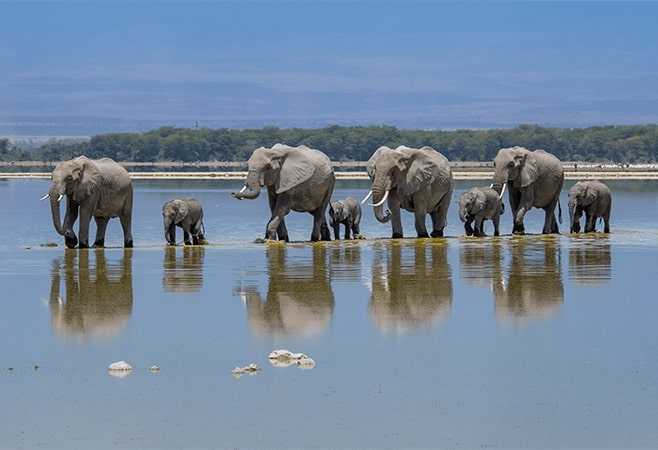
Lake Elmenteita is a soda lake in Kenya, known for its flocks of flamingos, natural hot springs, and diverse bird species
- Where is Lake Elmenteita located in Kenya?
- Best time to visit Lake Elmenteita
- How to Access Lake Elmenteita: Entrance Gates and Opening Hours
- How to get to Lake Elmenteita
- Top 5 things to do in Lake Elementaita, Kenya
- Top Lake Elmenteita Accommodations: Where to Stay for the Best Views
- Beyond the Safari: Tips for Exploring Lake Elmenteita's Hidden Gems
- Conclusion
Where is Lake Elmenteita located in Kenya?
Lake Elmenteita is a lake in Kenya’s Great Rift Valley, 120 kilometers northwest of Nairobi and approximately 30 kilometers southeast of Lake Nakuru. The lake is located between Lake Naivasha and Lake Nakuru, and is thus a component of the Kenya Lake System which is listed by UNESCO.
It is located close to the town of Gilgil, in Nakuru County, having an elevation of approximately 1,670 meters (5,480 feet) above sea level. The lake, as well as its environs, are highly conserved in an area of the Soysambu Conservancy, which is privately owned and used in conserving wildlife and bird species. Lake Elmenteita can be easily accessed by road from Nairobi via the Nairobi–Nakuru Highway and has become a common day trip and weekend outing destination.
Best time to visit Lake Elmenteita
The best time to visit Lake Elmenteita is during the dry seasons, from June to October and January to early March, when the weather is warm, sunny, and ideal for outdoor exploration. It is a great season to go birdwatching during these months because flamingos and other migratory birds can be found flocking near the alkaline shores of the lake. Photographers also will not miss the clear skies and golden sunsets, which light up hills of the Rift Valley, and give spectacular scenery.
The roads to the lake and the trails to Soysambu Conservancy are easier during the dry season since it is possible to enjoy game drives, nature walks, or hiking. The lower humidity also means that it is more comfortable to stay in the lodges and camps around the lake.
Visiting during the rainy seasons—March to May (long rains) and October to December (short rains)—is less ideal. As the scenery turns green and fruitful, it may happen that heavy rains make some of the roads slippery and muddy, which restricts movement. Nevertheless, tourists who are less attracted by the big cities can still get a chance to have a break at a quieter time, the possibility to visit the culture and rest in lodges.
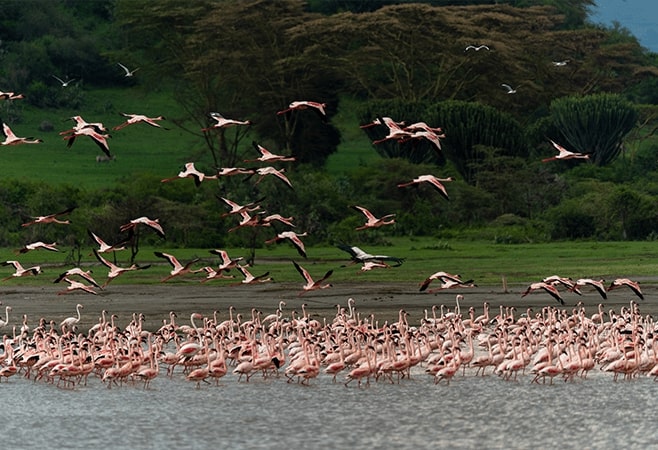
Lake Elmenteita is a wondrous wilderness to visit anytime during the year, but we recommend visiting during the dry season
How to Access Lake Elmenteita: Entrance Gates and Opening Hours
Entrance Gates
Lake Elmenteita is situated in a private wildlife sanctuary which is the Soysambu Conservancy that protects the lake and the surrounding environment. As opposed to Kenyan national parks like Lake Nakuru, Lake Elmenteita does not have a Kenya Wildlife Service (KWS) public gate. Rather there are special gates that visitors use, which are run by the lodges or conservation. The main access points are:
- Soysambu Conservancy Main Gate (near Gilgil)
This is the entrance most used by visitors to Lake Elmenteita. It is near the town of Gilgil on the highway between Nairobi and Nakuru. Day visitors, birdwatchers and guided safari tours usually go through the gate giving direct access to the Soysambu Conservancy, which encircles much of the lake. Entry fees apply, and visitors can confirm opening hours and regulations at the gate before exploring
- Lodge/Resort Gates
When staying in Lake Elmenteita Serena Camp or other private lodges and camps in the area of the lake, access is usually directly organized. These lodges have their respective gates or access points and therefore guests can easily come in and out without necessarily going through the main entrance gates at the conservancy. In most cases, the conservancy entry fee is included in the accommodation package.
Lake Elmenteita Entrance Fees
Visiting Lake Elmenteita usually requires entry through the Soysambu Conservancy, which protects most of the lake and its surrounding ecosystem. Entrance fees differ depending on your status as a Kenyan citizen, resident, or international visitor.
Here is a breakdown of typical entrance fees (approximate, subject to change):
|
Category |
Adults (per person) |
Children (below 12 years) |
Notes |
| Kenyan Citizens | KES 500 | KES 250 | Must present valid Kenyan ID or passport |
| Kenyan Residents | KES 1,000 | KES 500 | Valid residency/work permit required |
| Non-Residents (Tourists) | USD 30–35 (≈ KES 4,500) | USD 20 (≈ KES 2,800) | Payable in USD or KES at the official rate |
| Students (Group rates) | Discounted on request | Discounted on request | Usually applies to school or college groups |
| Safari Vehicle Entry | KES 300–500 | – | Applies to private vehicles entering the conservancy |
| Guided Safari Tours | Varies by operator | Varies by operator | Some tours include fees in the package |
Additional Notes:
- Payment: Cash and M-Pesa are widely accepted at the gate.
- Accommodation Guests: If staying at Serena Camp or other lodges, confirm whether the conservancy fee is included in your booking
- Children under 5 years are often admitted free of charge.
Timing:
The conservancy is generally open from 6:00 AM to 6:00 PM. Birdwatching and photography should occur in the early morning and late afternoon as this is the most active period of wildlife.
Tip: It is always worth ensuring that you have checked the gates and timings with your lodge or tour operator before traveling since there may be a difference between overnight guests and day visitors.
How to get to Lake Elmenteita
You can drive, fly, join a safari, or simply plan a weekend trip—there are several ways to reach Lake Elmenteita. This guide will cover the most viable modes of transport.
By Road from Nairobi
The most common way to reach Lake Elmenteita is by road, via the Nairobi–Nakuru Highway (A104), the main route into the Rift Valley. Depending on traffic, the drive takes about 2–3 hours. You will also have spectacular views along the route of the Rift valley escarpments, fertile farmlands, and infrequent wild animals. The most convenient methods include private cars, tour vans and rented cars, where you have the freedom to make stops at the viewpoints or other places of interest within the area like Lake Naivasha.
If you don’t have your own vehicle, you can take buses and matatus (shared minibuses) operating regularly between Nairobi and Nakuru. You are able to catch a bus at big bus terminals in Nairobi. After you arrive in Gilgil town or the highway headed towards Elmenteita, you can rent a taxi or a boda boda (motorbike taxi) to the lake and lodges around. Public transport is inexpensive but can be crowded and unpredictable.
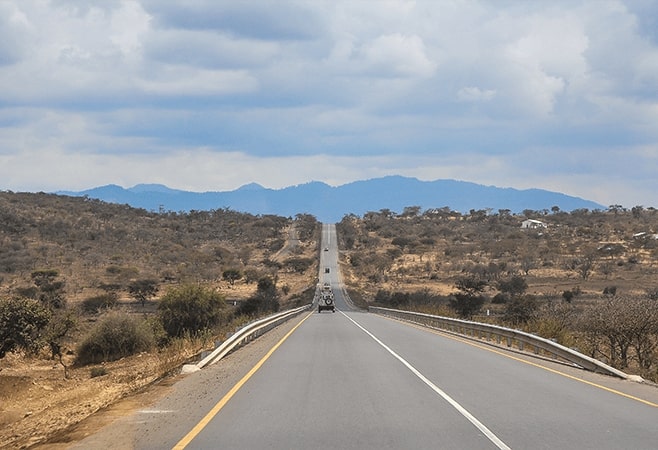
The primary road to Lake Elmenteita is directly from Nairobi or Nakuru through the Nairobi-Nakuru Highway by bus/matatu or private transport.
From Nakuru or Naivasha
If you are in Nakuru or Naivasha, then it is easy to get to Lake Elmenteita. The lake is approximately 45 minutes (40 kilometers southeast) of Nakuru. It is approximately 50 kilometers northwest of Naivasha and it takes approximately 1 hour by road. Taxis, car rentals, or hotel-arranged transfers are commonly used. A visit to Lake Elmenteita is also part of many safari programs that visit Lake Nakuru or Hell’s gate National Park.
By Air
Travelers can also fly in case they want to travel fast and comfortably. Chartered flights to airstrips near the lake (Naivasha or Nakuru) can be taken at Wilson Airport in Nairobi. You can organize a transfer to your accommodation at Elmenteita there. Although this option is more expensive, it helps to save time and is suitable for people with a busy timetable.
Getting Around
Around Lake Elmenteita, most lodges and camps organize guided vehicle tours for game drives and birdwatching. A walking safari is also a favorite since the region is secure and is relatively small in size, as compared to the bigger Rift Valley lakes.
Travel Tips
- The rainy season (March to May and October to November) is when 4x4 vehicles are advisable because some of the approaches to the lake can become muddy and hard to traverse.
- Bring very little cash in Kenyan Shillings to pay boda bodas or matatus or even entry fees at conservancies.
- Combine your visit with nearby attractions such as Lake Naivasha, Lake Nakuru, or Menengai Crater to complete your Rift Valley experience.
Top 5 things to do in Lake Elementaita, Kenya
This shallow alkaline lake lies between Lake Naivasha and Lake Nakuru and hosts spectacular views, rare species of birds and a serene environment that nature lovers would be happy to visit. You can have a lot of memorable experiences whether you are visiting on a day trip or you stay in one of the lodges in the nearby areas.
Bird Watching
Lake Elementaita is one of the best places for bird watching in Kenya where more than 400 species have been documented. It is the home of flamingos, pelicans, herons, and other migratory birds, thus a haven of both birdwatchers and photographers.
The best time to see big flocks of birds feeding is in the early mornings and evenings when the background is the Rift Valley hills. Birdwatching is rated as one of the top things to do in Lake Elementaita by many travelers as it is a rare activity that combines wildlife and stunning views in one memorable experience.
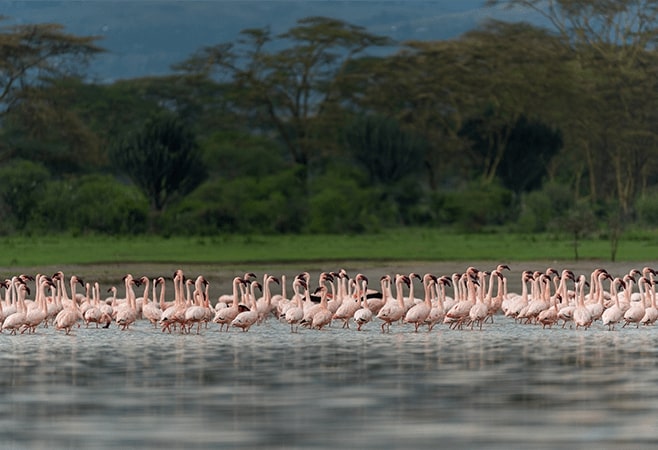
Lake Elementaita Wildlife Sanctuary is a birdwatcher's paradise, home to over 400 bird species, including the famous Greater and Lesser flamingos
Game Drives in Soysambu Conservancy
Much of the lake lies within the Soysambu Conservancy, a privately owned reserve home to diverse wildlife. Giraffes, zebras, antelopes and even buffalo can be seen on guided game drives here. Soysambu is a more intimate experience with nature, unlike busier national parks, as there are fewer vehicles and people and the safari experience is less crowded.
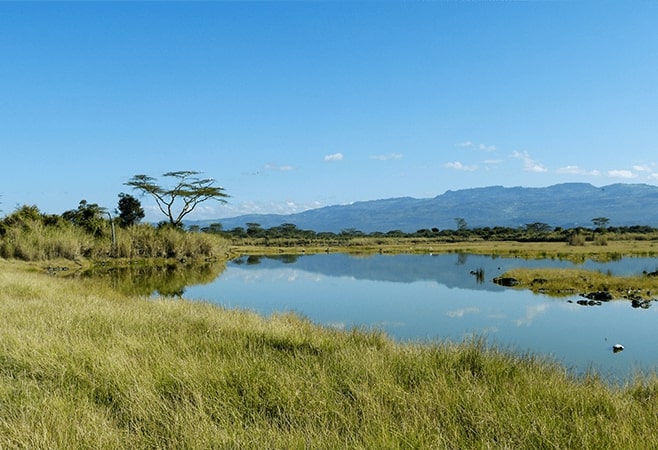
Day game drives offer scenic views and wildlife like zebras and giraffes
Nature Walks and Hiking
Walking around Lake Elementaita is one of the best methods of enjoying the beauty. Guided hikes and walking safaris will lead you through volcanic routes, rocky escarpments, and plains with open surfaces where each step will show you something new about the unique wealth of the ecosystem of the area. Local guides usually give visitors information about the flora, fauna, and culture that are so interesting about this section of Kenya.
Visitors enjoy spectacular views of the shimmering lake of the glittering lake as they are often accompanied by the background of flamingos and pelicans. Hiking is one of the most memorable activities at Lake Elementaita whether you want to take a short walk or a longer one. It enables tourists to take their time, become one with nature and experience the serene environment that contributes to the charm of this UNESCO World Heritage Site.
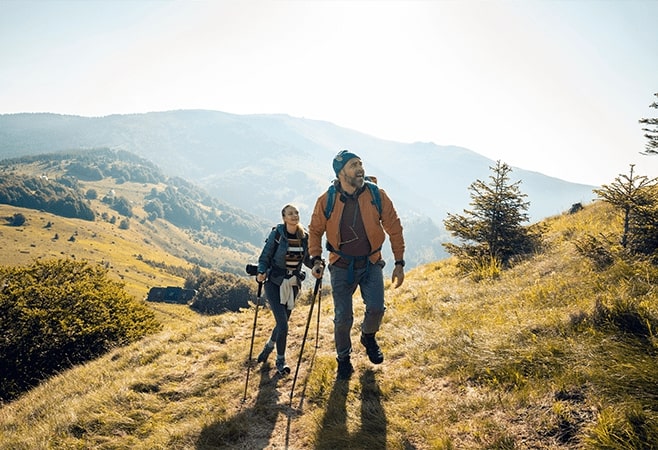
Explore scenic hiking trails within Soysambu Conservancy, or plan a day trip to Hyrax Hill near Nakuru for an archaeological experience
Visit the Hot Springs Area
To the south of the lake, you can find natural hot springs gently bubbling from the ground—small geothermal vents that attract birds and wildlife. These geothermal phenomena are very interesting sites to see and birds and other animals usually come into the region. It’s a fascinating spot for photography and for observing the geothermal and geological features surrounding the lake.
Cultural Experiences
Engage with the local communities around Gilgil and Soysambu to discover authentic Maasai and Kikuyu culture. You will be able to go to markets, see traditional dances, or get to know about the beadwork and crafts, which are still practiced in the area.
Top Lake Elmenteita Accommodations: Where to Stay for the Best Views
The right accommodation is important in order to make your trip worthwhile. The region caters to all kinds of travelers, from luxury lodges to mid-range camps. Here are some of the best options for staying near Lake Elmenteita.
1. Lake Elmenteita Serena Camp
This is the most renowned stay in the area which combines luxury with spectacular views. The camp is equipped with tent suites, contemporary facilities, personal decks facing the lake and infinity pools. Located within Soysambu Conservancy, guests can enjoy fine dining, cultural shows, and guided game drives. It is ideal for those in need of comfort without being too far away in the wilderness.
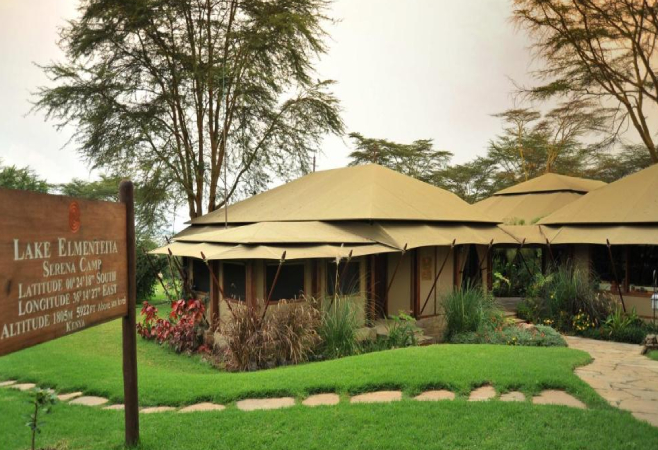
A truly magical holiday setting with a small, immaculately maintained tented upscale safari camp on the shores of Lake Elmenteita
2. Sentrim Elementaita Lodge
Sentrim Elementaita Lodge is a good mid-range accommodation for families and groups. It sits on the banks of the lake and offers spacious cottages and contemporary facilities, such as a swimming pool and conference halls. It is perfect for tours where people would want to have convenience and affordability without compromising the comfort of the trip since there are many other things to see in the area like Lake Nakuru which is easily accessible.
3. Jacaranda Lake Elementaita Lodge
This is an old lodge that occupies a colonial-era building and is surrounded by a beautiful garden and gives a very old-world ambiance. It offers comfortable rooms, excellent hospitality and superb lake scenery. Visitors have the opportunity to do walking safaris, watch birds or just have a rest in the peaceful gardens.
4. Sunbird Lodge
Sunbird Lodge stands on a hill overlooking a panoramic view of both Lake Elementaita and Lake Nakuru, and is an environmentally-friendly choice that incorporates sustainability with comfort. The lodge is partly solar-powered and its chalets are made using natural materials. It has excellent food and gorgeous sunsets making it a popular destination among couples and eco-friendly travelers.
5. Flamingo Hill Tented Camp
Located inside Lake Nakuru National Park, Flamingo Hill Tented Camp serves as a convenient base for exploring both Lake Nakuru and nearby Lake Elmenteita. The camp includes large tents, excellent food, and conservation orientation. It is an excellent option among those who wish to have a safari.
6. Budget and Community Stays
To the backpacker and cultural traveler, guesthouses in Gilgil town and homestays around Soysambu provide affordable and local experiences. The experience of living with local families will give them a chance to understand the Kikuyu and Maasai culture and contribute to community livelihoods.
Beyond the Safari: Tips for Exploring Lake Elmenteita's Hidden Gems
Lake Elmenteita, a UNESCO World Heritage Site in Kenya’s Great Rift Valley, boasts brilliant birdlife, especially the iconic flamingos and the surrounding Soysambu Conservancy. In order to have the best smooth and memorable safari experience, the following are the tips that you must consider when going on your trip.
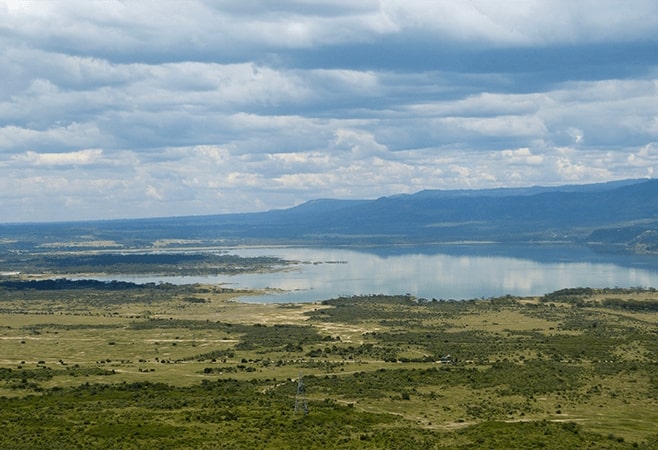
The essential first time travel guide to Lake Elmenteita
1. Travel Documents
Travel documents should always be carried by foreigners. Passport is required and the majority of visitors will need a Kenya ETA (Electronic Travel Authorisation) which they should obtain online prior to visiting Kenya. Have a copy of your ETA and passport both in digital and printed format since there are hotels and lodges that may ask to see them at the check-in.
2. Respect Wildlife and Culture
When enjoying Lake Elmenteita activities such as birdwatching, game drives, or cultural visits, always respect the environment and local communities. Keep a safe distance from animals, avoid feeding them, and ask permission before photographing locals. Dressing modestly is also appreciated in nearby villages.
3. Accommodation Choices
Choose a lodge or camp that suits your budget and interests. Upscale options like Lake Elmenteita Serena Camp offer luxury experiences, while smaller eco-lodges provide a more intimate and affordable stay. Booking early, especially during peak seasons, is recommended.
4. Safety and Health
-
Prioritize Birding Gear: Lake Elmenteita is one of the best places to watch birds, with more than 400 species. Your camera should be carried with your binoculars and a telephoto lens to get a spectacular view of the flamingos, pelicans and other varieties of avifauna.
-
Pack Smartly for Safari: The climate in the area is fairly mild, although the temperatures may change drastically. Pack layered clothing, including light outfits for daytime, and a fleece or jacket for chilly mornings and evenings, a fleece or jacket during chilly early morning/evening game drives and a good sun hat, sunglasses, and sunscreen. Neutral colors will always suit to blend into the safari.
-
Take Health Precautions: Lake Elmenteita is located in an area where malaria is active. Your doctor should advise you on anti-malarial medication, and you should always carry insect repellent. Like any other safari, keep hydrated and exercise care around the animals, exercise care around animals, especially monkeys and baboons
With the tips mentioned, your trip to Lake Elmenteita will not only be a fun experience but also a stress-free one, as you will be able to enjoy this amazing Kenyan tourist destination.
Conclusion
Lake Elmenteita is not only a hidden jewel in Kenya’s Great Rift Valley but also a place of striking beauty, rich wildlife, and vibrant culture. Its glittering alkaline waters, flocks of flamingos and striking landscapes make it a true haven for nature lovers and photographers. In addition to birdwatching, the neighboring Soysambu Conservancy provides game drives, hiking tracks and cultural experiences with local communities making a complete package.
And be it a relaxing stay in a picturesque lodge, an adventure in the wilderness, or a reflection of the Kenya heritage, all comes in peace and calm in Lake Elementaita. Travelers seeking to unwind off the busy streets of Nairobi or venture outside of the most frequented parks, this is a true hidden gem that will offer a relaxing experience and an experience that will be remembered. Indeed, Lake Elementaita is the meeting of the natural and cultural wonders of Kenya.
Related Articles
- The Ultimate Tea Explorer: Discover the 11 best places to visit in Limuru a Quiet Weekend Escape
- From Peaks to Plains: Exploring the 11 Best Places to visit in Kitale for Your Bucket List
- From Luxury to Comfort: A Guide to the Top 14 Hotels in Nakuru for Unforgettable Memories
- A Guide to the Best Cafés and Coffee Shops in Momba for Quality Brews and Unbeatable Vibes
- Dancing Until Dawn: Discovering the Ultimate Nightlife in Mombasa, Kenya
- The Hidden Gem of Kenya: An Essential Travel Guide to Laikipia County
- The 14 Best Cafes and Coffee Shops in Nairobi for Fresh Brews and Tasty Meals
- Unveiling Swahili Secrets: A Comprehensive Travel Guide to Old Town Mombasa











